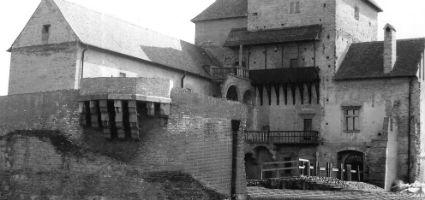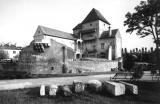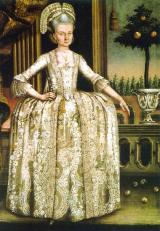2024. April 19. Friday
Simontornya Castle Museum - Simontornya
 |
Address: 7081, Simontornya Vár tér 10.
Phone number: (74) 486-354
E-mail: simontornyai.var@gmail.com
Opening hours: 01.10-31.03.:Tue-Sun 10-16, 01.04-30.09.: Tue-Sun 10-17
|
The 13th-century living Tower was built by Simon (son of Salomon) among the swamps of the Sio river. (Hence the name: Simontornya = Simons Tower).
The castle has had a number of different owners throughout the centuries, and nearly all of them made some alterations. First the Lackfi's in the XIVth - century built a new gothic wing, altered the old Tower, and added an arcaded loggia to the back-front. Supposedly the outer defences were erected also in this period. After the death of the last member of the Garai family, the castle passed again back to queen Beatrix, wife of Matthias Corvinus in 1482.
The golden age of the castle came under the era of the Buzlay family. Mozes Buzlay, marshall of king Ulaslo, second, brought Italian masters and craftsmen from Buda improving the castle into a renessaince palace, applying the latest rchitectural methods of his time. Following the death of Buzlay, the castle soon fell into Turkish hands (1545). This was the beginning of an entirely new era with special emphasis on military requirements only. During the nearly 150 years of Turkish occupation only minor alterations have been made on the castle.
Simontornya- the centre of the Turkish Simontornya Sandjak- was recaptured by Louis of Bayern in 1686. In the early years of the XVIIIth century (1702-1704) major alteretions turned the castle into a fortress, thus destroying ail reamaming beauty and glamour of the past.
During the revolution against the Habsburgs led by Prince Rákóczi. Simontornya has became the stronghold of the rebells (kuruc) in South-west Hungary. The fortress fell to the Austrian army in 1709, and it was housing army troops until 1717.
The castle fortress in the 1720's was donated to the Styrum-Limburg family, but soon they built a new a castle, and turned the old one into a barn. Ever since it was used for the same purposes by a number of new owners upto 1960, when proper archeological excavations started.
After farther excavations and restoration works from 1967 on the castle-museum was opened to the public in 1975. What the visitor can see today here, is a cross-section of architectural history of the last 700 years in Hungary. On the ground-floor one can see objects and documents from the past of the castle. The gallery on the firs floor is showing portraits of nobolities of Tolna county (Courtesy of the Wosinsky Museum of Szekszárd).
The second and third floors of the gate-tower are hosting temporary fine arts exhibitions of contemporary artists.
The castle has had a number of different owners throughout the centuries, and nearly all of them made some alterations. First the Lackfi's in the XIVth - century built a new gothic wing, altered the old Tower, and added an arcaded loggia to the back-front. Supposedly the outer defences were erected also in this period. After the death of the last member of the Garai family, the castle passed again back to queen Beatrix, wife of Matthias Corvinus in 1482.
The golden age of the castle came under the era of the Buzlay family. Mozes Buzlay, marshall of king Ulaslo, second, brought Italian masters and craftsmen from Buda improving the castle into a renessaince palace, applying the latest rchitectural methods of his time. Following the death of Buzlay, the castle soon fell into Turkish hands (1545). This was the beginning of an entirely new era with special emphasis on military requirements only. During the nearly 150 years of Turkish occupation only minor alterations have been made on the castle.
Simontornya- the centre of the Turkish Simontornya Sandjak- was recaptured by Louis of Bayern in 1686. In the early years of the XVIIIth century (1702-1704) major alteretions turned the castle into a fortress, thus destroying ail reamaming beauty and glamour of the past.
During the revolution against the Habsburgs led by Prince Rákóczi. Simontornya has became the stronghold of the rebells (kuruc) in South-west Hungary. The fortress fell to the Austrian army in 1709, and it was housing army troops until 1717.
The castle fortress in the 1720's was donated to the Styrum-Limburg family, but soon they built a new a castle, and turned the old one into a barn. Ever since it was used for the same purposes by a number of new owners upto 1960, when proper archeological excavations started.
After farther excavations and restoration works from 1967 on the castle-museum was opened to the public in 1975. What the visitor can see today here, is a cross-section of architectural history of the last 700 years in Hungary. On the ground-floor one can see objects and documents from the past of the castle. The gallery on the firs floor is showing portraits of nobolities of Tolna county (Courtesy of the Wosinsky Museum of Szekszárd).
The second and third floors of the gate-tower are hosting temporary fine arts exhibitions of contemporary artists.


